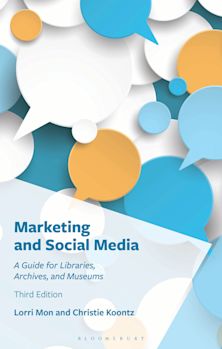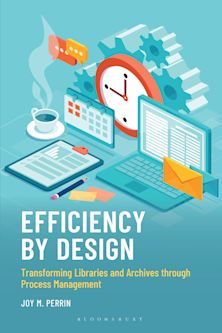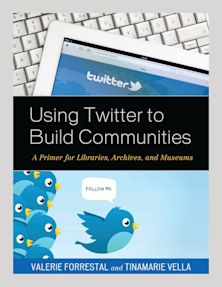- Home
- ACADEMIC
- Library & Information Science
- Archives and Records Management
- In-House Book Binding and Repair
In-House Book Binding and Repair
In-House Book Binding and Repair
This product is usually dispatched within 3 days
- Delivery and returns info
-
Free CA delivery on orders $40 or over
You must sign in to add this item to your wishlist. Please sign in or create an account
Description
In-House Bookbinding and Repair is a working document that contains information on setting up both a basic bookbindery and repair lab (i.e. the design, equipment, tools, and supplies needed) and instructions on rebinding and repairing cloth-bound books. Highly illustrated to greater enhance its usefulness, this manual also covers various aspects of book repair and conservation, and contains appendixes on manufacturers and suppliers of materials and products discussed in the text, an extensive Glossary of terms, a separate section on World Wide Web Resources, and a helpful bibliography.
This manual will prove valuable to libraries of all sizes and locations. Library managers and administrators will find it a worthwhile resource as they contemplate the utility of an in-house lab. Library staff charged with various aspects of bookbinding and book repair will find the manual to be a practical reference tool. The volume is also designed to be used as a primer for related courses in Library and Information Science Studies programs and may be of interest to individuals interested in private practice.
Table of Contents
Part 2 Acknowledgments
Part 3 Part One: Setting Up Shop
Chapter 4 1. The Environment
Chapter 5 2. The Equipment
Chapter 6 3. The Tools
Chapter 7 4. The Supplies
Part 8 Part Two: The Process: Recasing a 20th- or 21st-Century Book
Chapter 9 5. Parts of a Book and Types of Damage
Chapter 10 6. Preservation Awareness
Chapter 11 7. Preparing the Text Block
Chapter 12 8. Resewing
Chapter 13 9. Making the Case
Chapter 14 10. Casing In
Chapter 15 11. The Hollow Tube
Chapter 16 12. The Rebacking
Chapter 17 13. Saving Provenance
Part 18 Glossary
Part 19 Manufacturers and Suppliers
Part 20 World Wide Web Resources
Part 21 Bibliography
Part 22 Index
Part 23 About the Author
Product details
| Published | Sep 26 2005 |
|---|---|
| Format | Paperback |
| Edition | 1st |
| Extent | 130 |
| ISBN | 9780810852242 |
| Imprint | Scarecrow Press |
| Dimensions | 278 x 214 mm |
| Publisher | Bloomsbury Publishing |
About the contributors
Reviews
-
An excellent introduction to the topic, it is a useful, practical bookbinding/repair lab manual...highly recommended...
Collection Building
-
Although some book-repair projects may come with the warning, 'Don't try this at home,' library staff can safely handle many projects. In her new book, In-House Bookbinding and Repair, Sharon McQueen explains how to set up a basic bookbindery and repair lab and provides instruction on rebinding and repairing cloth-bound books. Extensive illustrations by Ellen Latorraca depict the repair techniques, making this a practical reference tool for staff.
American Libraries
-
...offers excellent advice about planning; a good reminder about some critical aspects that often get lost in the push to begin work....We applaud Dr. McQueen's attempt. We haven't had a new book for in-house repairs in a while. Reading the book's preface, and the author's long list of acknowledgments, we quickly feel her unbridled enthusiasm for library preservation and book conservation repair. What a joy to read of someone's passion for a task that is quite time-consuming and detailed. Often the public sees a book repaired, sitting on a shelf, and rarely realizes the effort-the hour or more that one or more library staff took to return it to usable condition. We appreciate that a professor takes on the challenge of supporting in-house conservation repair departments. Thank you, Dr. McQueen.
Binders' Guild Newsletter
-
This is a well-illustrated guide that is better than the brief materials provided by the supply houses....Bottom line: Worth the price.
Teacher Librarian
-
McQueen, U. of Kentucky library school, has done a workmanlike job that is unusual only in its 30 pages of ideas for administrators on setting up a binding/repair studio. The repair portion, 60 pages, covers material that is accessible in many other manuals. The last 25 pages include a glossary, list of suppliers, web resources, and a bibliography. The book was written for use in a course taught by James Twomey at the library school of the U. of Wisconsin, Milwaukee.
Reference and Research Book News


































